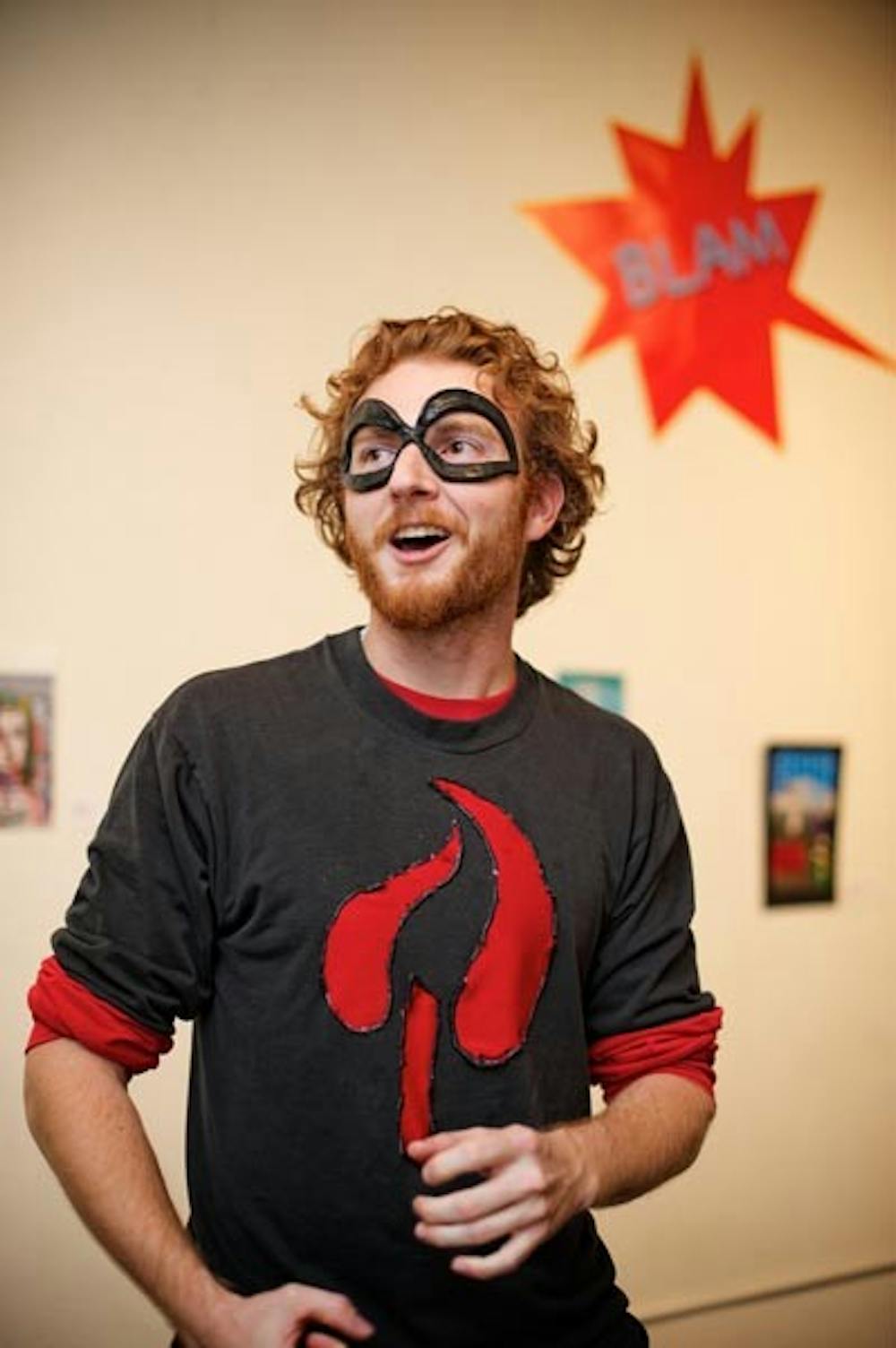A beautiful woman dressed to represent a Chiquita Banana stomps on the face of the “Misguided Vigil Auntie” on one wall, while the venomous seductress known as Lady Starbucks leers out of a storefront across the gallery.
These comic book covers that address social issues like immigration and legalizing marijuana greet the visitors to “Amazing Ink,” the new student art show that opened Monday at the ASU Step Gallery on Mill Avenue.
“More people respond to comic books than serious art,” said intermedia art senior Paul Golfen, who organized and selected the pieces for the exhibit.
He said the storyline of the comic book draws people in to a discussion of social and political issues, while serious art makes a confrontational statement.
All 30 of the covers in the exhibit are original art pieces, Golfen said. The media used ranges from collages made out of very thinly cut wood to covers created using Adobe Illustrator. Every cover features original superheroes by both ASU students and professional artists.
Usually artists come up with a problem they would address and the storyline before they create a cover, Golfen said.
“I asked them to do it backwards,” he said. “That was the challenge of the exhibit.”
The show has been in the works since last spring, and until recently Golfen accepted pieces from local artists.
Golfen said comics have been part of social commentary for a long time, going back to the 1940s when Captain America took on Hitler, and in the 1960s when the X-Men tackled issues of segregation.
Golfen said he wanted to put on a show using only comic book covers because they are a subtle and engaging way to present social issues.
Anthony Kneale, a theater senior and an artist with four covers in the show, said he hopes to create a long-running series about a hero named Candle who suffers from schizophrenia, which allows him to find criminals and save the day.
He creates his comic book covers by taking pictures of himself or his friends and uses Photoshop to polish the images.
This will allow him to go in costume to conventions like Comic-Con dressed up as his hero Candle to develop a fan base.
He said his background in theater allowed him to “spice up the comic world in ways the traditional artist wouldn’t think of.”
Other characters featured in the show created by Kneale included “The Hashishian,” a ninja-like character who uses giant metal leaves as weapons.
Kneale said he uses the character to “bring up both sides of the [marijuana] issue within the storyline.”
He wants to encourage his audience to think about the use of marijuana and its negative effects on people outside the U.S., like the growers in South America, he said.
“Every book should deal with a personal issue the reader might be dealing with and with a social issue the reader might be hearing about,” Kneale said.
Gallery director Ryan Miller said the number of applicants to use all the student gallery spaces has been steadily rising from about 18 last spring to more than 30 this fall semester. The comic exhibition is the only exhibition in the gallery currently.
There are about 10 exhibits scheduled for the gallery this semester, including several photography exhibitions, said residential assistant of gallery exhibitions Emily Stergar.
The space is slightly restricted but it still hosts interactive and performance-based exhibits. For example, earlier this year in an exhibit called (UN)Loading Zone, the art students exhibiting provided haircuts to visitors and provided an opportunity for the visitors to share creative ideas while getting their hair cut.
Miller said the improved quality of the space has drawn increased student interest. Better natural and studio lighting replaced the previously mediocre lighting, Stergar said.
Miller is responsible for selecting the members of a committee to decide what work is shown in the gallery. Instead of inviting professors to be on the committee, Miller invited professionals from the Heard Museum, the ASU Art Museum and others in the community.
This drew more interest, he said, because the students want to make connections in the local art community.
Miller was involved with the gallery as a graduate art student and he said he was pleased with the improved quality of the exhibitions since then.
Reach the reporter at mary.shinn@asu.edu





